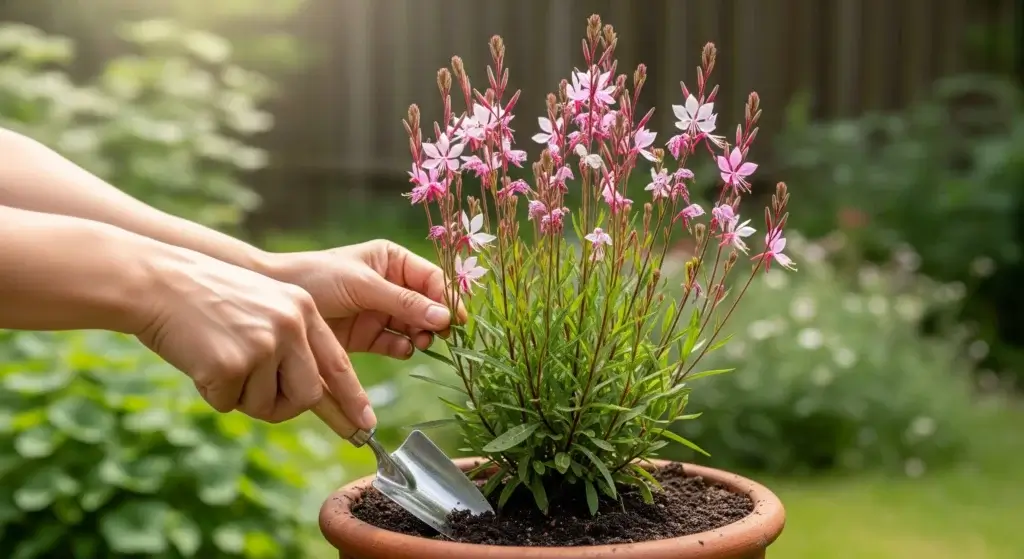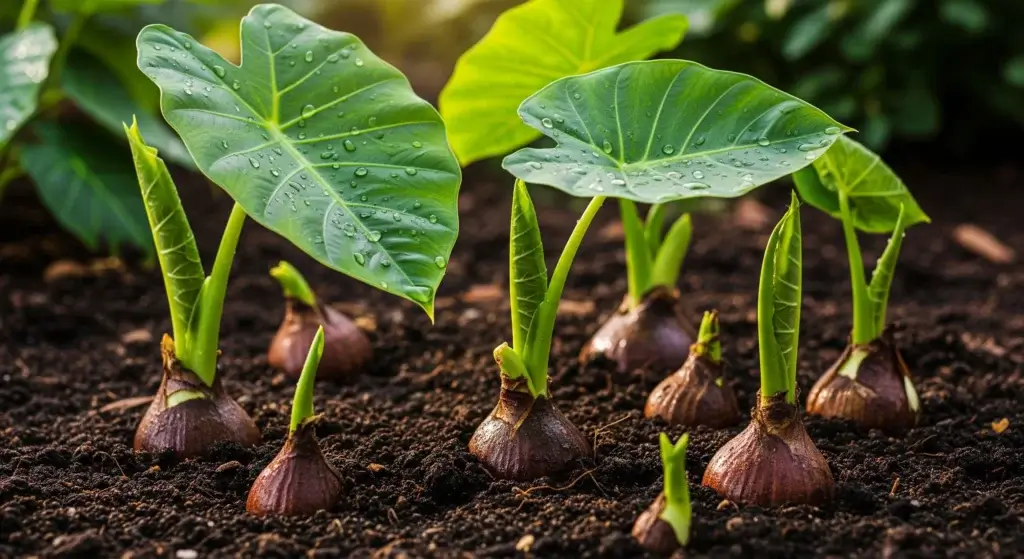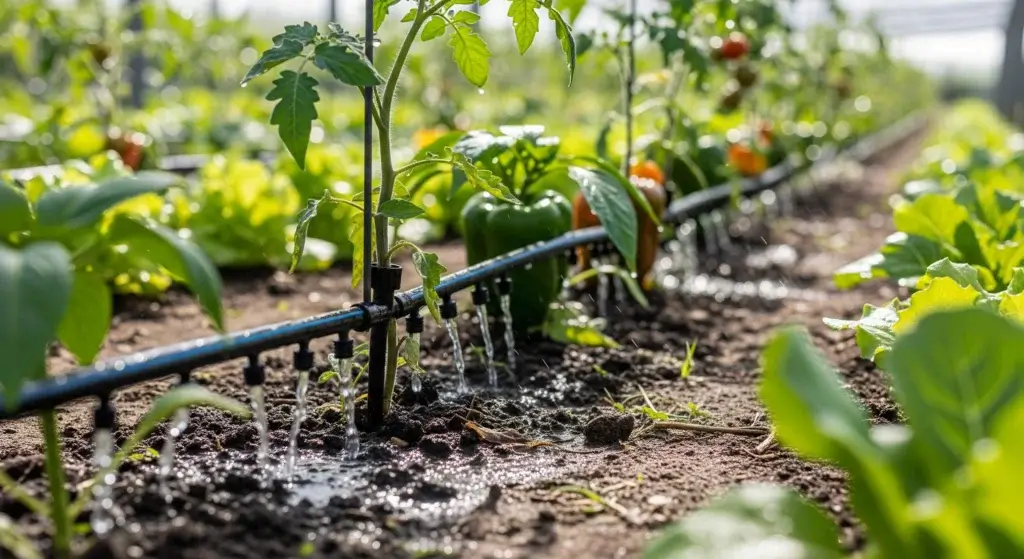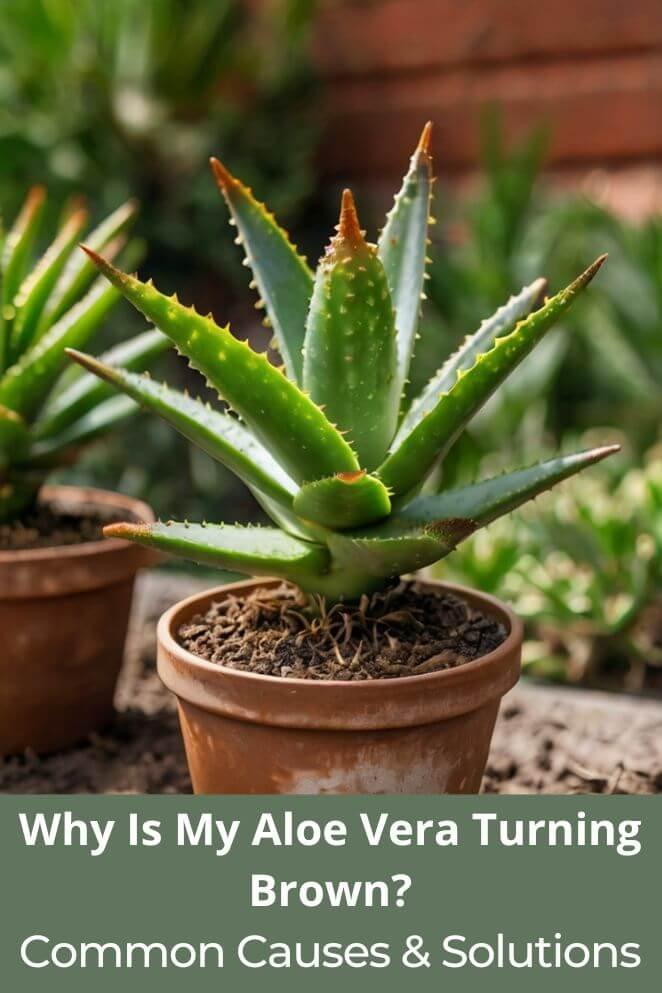
Aloe vera plants have earned their reputation for being tough, low-maintenance, and stunning.
But when those gorgeous green leaves start turning brown, even the most chill plant parent can feel a wave of panic—like Groot watching his own leaves fall off.
Don’t worry—you’re not alone, and it’s not too late.
In this guide, we’ll break down why your aloe might be throwing a fit (with expert-backed insights) and how you can nurse it back to its vibrant best.
Let’s get our hands dirty and bring your aloe back to life!
Common Reasons Your Aloe Vera Is Turning Brown
When your aloe starts browning, it’s basically sending up a Bat-Signal for help.
Catching the problem early can mean the difference between a comeback story… and a plant funeral.
Here’s what might be going wrong:
1. Overwatering
Clues: Squishy, mushy, or brown leaves near the base.
Aloe is a succulent—it’s basically a water hoarder by design.
If you flood it like it’s a rice paddy, the roots can rot fast.
Fix it:
- Water only when the top 2–3 inches of soil feel bone dry.
- Always use a pot with drainage holes (no exceptions).
- Switch to a cactus or succulent soil mix—your aloe will thank you.
2. Underwatering
Clues: Dry, crispy, brown-tipped leaves that feel like old potato chips.
Yes, aloe is drought-tolerant, but even desert warriors need a drink sometimes.
Extreme thirst = stressed plant = crispy drama.
Fix it:
- Water deeply, but only every 2–3 weeks (depending on your climate).
- Do the “soil poke test” before watering—moist soil = wait, dry soil = go.
3. Sunburn
Clues: Brown or reddish patches, especially on leaves that catch the most sun.
Aloe loves light but too much direct, harsh sun can scorch it faster than a ginger at Coachella.
The Journal of Experimental Botany (2017) points out that excessive UV exposure damages plant tissue just like it does human skin.
Fix it:
- Move your plant to a spot with bright but indirect light.
- If taking your indoor aloe outdoors, do it slowly—like a Netflix series reveal, not a movie trailer drop.

4. Cold damage
Clues: Brown, mushy patches showing up after a chilly night.
Aloe is basically a tropical beach babe at heart—it hates the cold.
Anything below 50°F (10°C) can leave lasting scars.
Fix it:
- Bring your aloe indoors before the first cold snap (think of it like wintering a celebrity in Malibu).
- Keep it away from drafty windows and icy doorways.
5. Poor soil drainage
Clues: Soggy soil that smells weird + brown, sad leaves.
If your aloe’s roots are swimming instead of breathing, fungal diseases can sneak in faster than spoilers on premiere night.
Fix it:
- Repot using a cactus/succulent mix that drains fast.
- Boost drainage by adding sand, perlite, or pumice (think: desert vibes, not swamp vibes).
6. Fertilizer burn
Clues: Brown tips or random crispy patches, but otherwise decent-looking leaves.
More isn’t better.
Dumping heavy fertilizer on aloe is like trying to fix a bad day with ten shots of espresso—crash incoming.
Fix it:
- Feed your aloe lightly: once in spring, once in summer, and call it good.
- Always dilute your fertilizer—aim for a succulent-safe formula at half-strength.
7. Pests
Clues: Weird brown spots, sticky gunk, or actual bugs setting up camp.
Mealybugs, scale, and aphids love aloe sap like it’s free coffee at work—and they’ll drain your plant if you don’t act fast.
Fix it:
- Play plant detective: inspect leaves (especially undersides) weekly.
- If you spot invaders, treat ASAP with neem oil or insecticidal soap. (Yes, it’s basically plant skincare.)

Quick Troubleshooting Guide
| Problem | Symptoms | Solution |
| Overwatering | Mushy, brown leaves |
Reduce watering, repot if necessary
|
| Underwatering | Dry, crispy leaves |
Water thoroughly, then adjust schedule
|
| Sunburn | Red-brown spots |
Move to indirect light
|
| Cold damage | Brown mushy patches |
Keep indoors during cold seasons
|
| Poor soil drainage | Persistent wet soil |
Switch to fast-draining mix
|
| Fertilizer burn | Brown leaf tips |
Dilute fertilizer, fertilize sparingly
|
| Pests | Sticky spots, visible bugs |
Use neem oil or insecticidal soap
|
Best Practices to Keep Your Aloe Vera Healthy
You don’t need a green thumb—or a Hogwarts degree—to keep your aloe thriving.
Just stick to these basics:
Water like a pro
- Only water when the top few inches of soil are dry. (If in doubt, wait it out.)
- Always use lukewarm water—your aloe doesn’t want an ice bath like it’s on Survivor.
Light it right
- Aim for 6–8 hours of bright, indirect light a day. (Think: sunny window, not desert death ray.)
- Rotate the pot every few weeks so your aloe doesn’t get lopsided like a badly frosted cupcake.
Pick the perfect pot + soil
- Terra cotta pots = elite choice. They breathe, helping prevent soggy roots.
- Use a gritty, fast-draining mix made for succulents. (Basically, aloe wants a penthouse, not a swamp.)
Keep a pest patrol routine
- Inspect leaves regularly, like a mini-plant CSI.
- Wipe them down with a damp cloth to keep creepy crawlies from moving in.
Feed with care
- Use a succulent-specific fertilizer diluted to half strength (no full-throttle plant protein shakes, please).
- Only fertilize during aloe’s “hot girl summer” season—spring and summer, never winter.
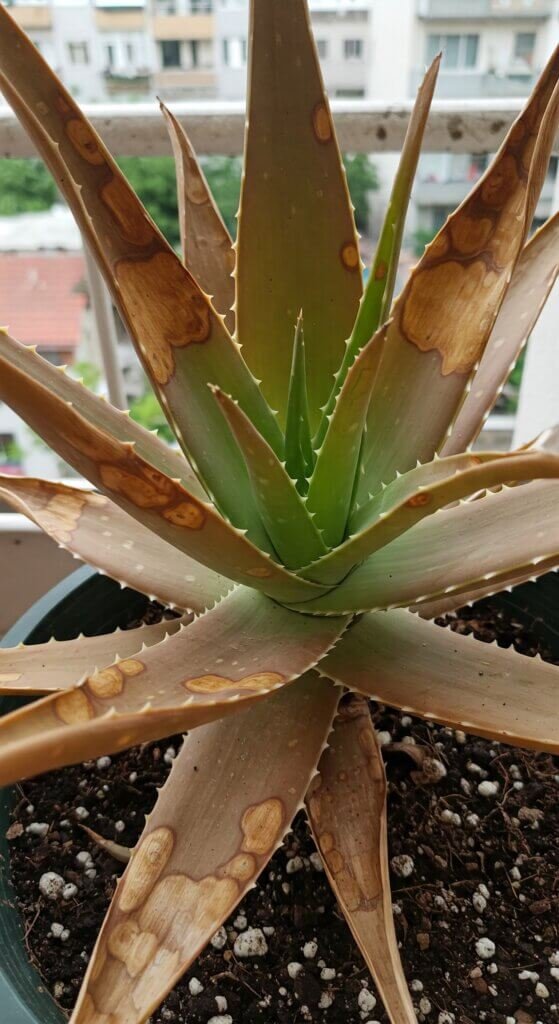
Frequently Asked Questions (FAQs)
Yes, trim the damaged leaves with clean, sharp scissors. Cut as close to the base as possible without injuring healthy tissue.
Unfortunately, once aloe leaves turn brown, they won’t revert to green. Focus on treating the underlying cause to prevent further browning.
If the inner gel is still clear and not slimy or discolored, it is generally safe to use. Always inspect it closely before applying.
Final Thoughts
When your aloe’s leaves start browning, it’s not being dramatic—it’s sending an urgent group chat message.
Whether it’s drowning in too much water, roasting under harsh light, or fighting off tiny invaders, spotting the issue early is the key to a comeback story.
Quick reminder:
- Stay observant (your aloe deserves some main character energy).
- Water wisely—not like it’s auditioning for Waterworld.
- Adjust lighting based on the seasons (and the vibe check).
- Keep pests and temperature drama to a minimum.
A healthy aloe isn’t just a Pinterest-worthy houseplant—it’s a mini first-aid kit for burns and skincare emergencies.
Show your aloe a little love, and it’ll keep glowing right back at you.

